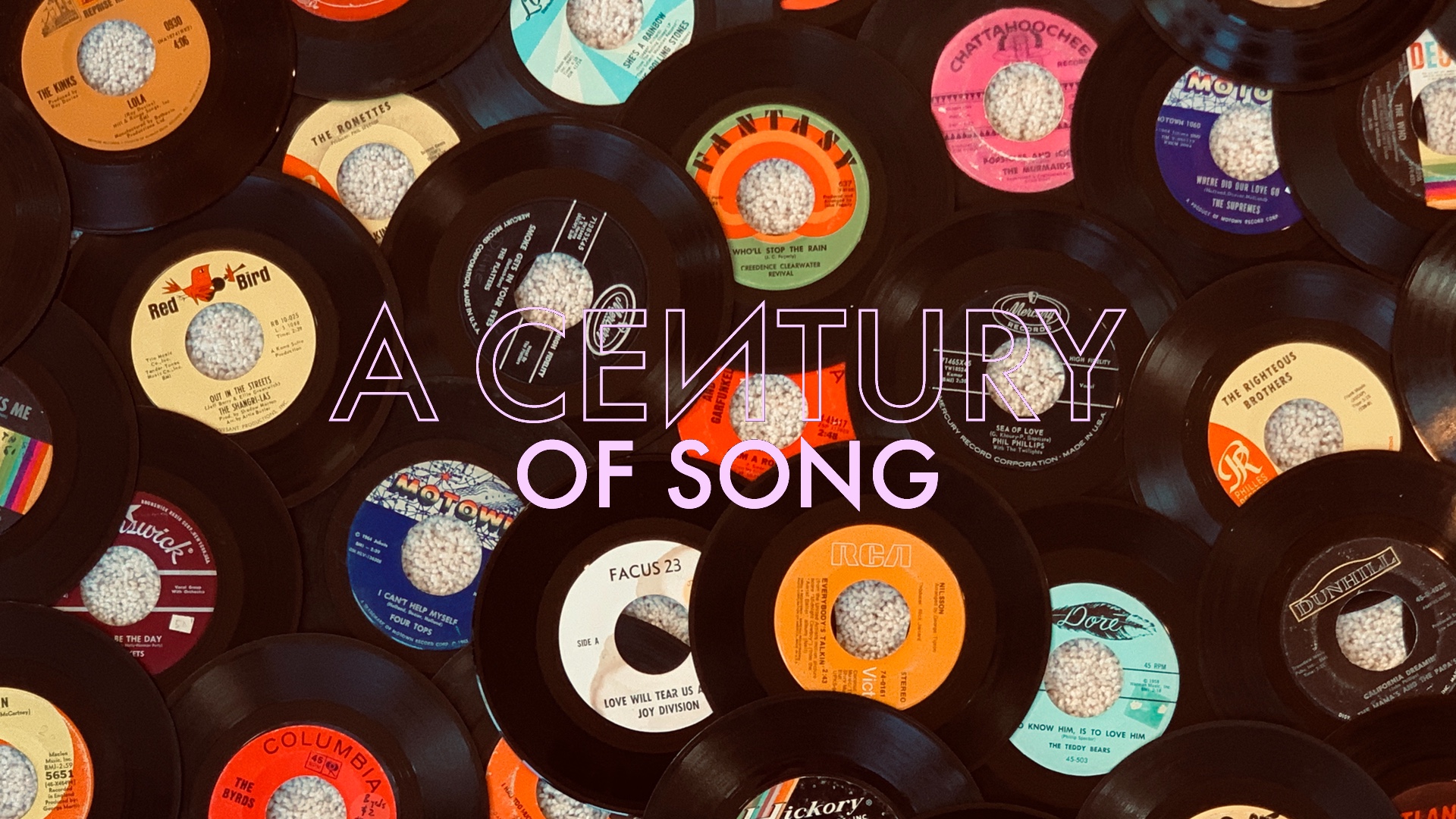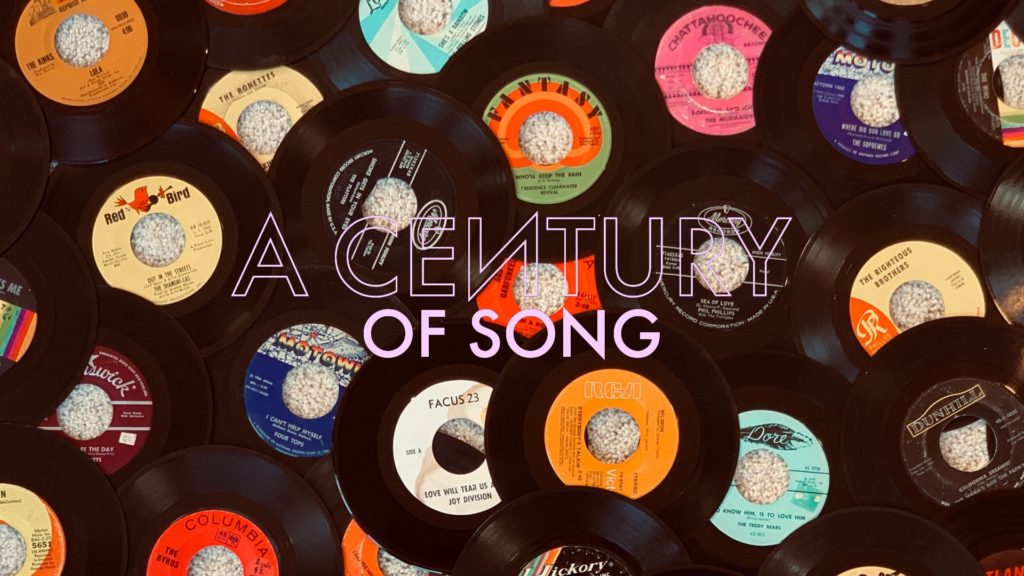
A Century of Song is an attempt to summarize 100 years of popular music through 1000 carefully chosen tracks. Included within this list are landmark singles, stellar album cuts, huge hits, hidden gems, and more than a few personal favorites. Read the introduction for the project here, and enjoy the embedded videos and Spotify playlist.
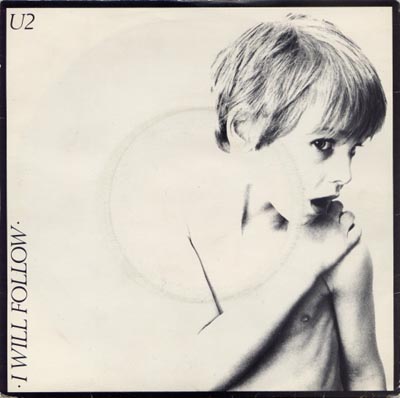
320
U2 had already issued an EP and a handful of singles, but it’s the October 1980 release of Boy that, today, sounds like the band’s true arrival. Kicking off with a track that gave an intriguing glimpse into the Dublin quartet’s stadium-sized ambitions, Boy mixed the angst of post-punk with the anthemic impulses that would, in time, make them stars.
That track, “I Will Follow,” remains nearly the finest moment of U2’s career, forty years after its release. Larry Mullen Jr. and Adam Clayton provide a pulsing rhythm that allows The Edge to establish the sweet spot between rhythm and lead. It’s the move that would make him one of the most unique – and influential – guitarists of his generation. While Bono will forever be accused of offering little more than platitudes – a criticism that is not without merit – he delivers a powerful “everyman” performance that draws a surprising amount of pathos from a relatively slight set of lyrics.
I’ve resisted the urge to allow my jaded take on U2 to seep into their previous entries (#398, 437, 574, 757, 821), and I’ll maintain those efforts in their last couple of appearances. This was, after all, the first band that I ever really cared about. With that said, no matter how cynical I’ve ever allowed myself to become about the group, this was the song that always managed to pull me back in.
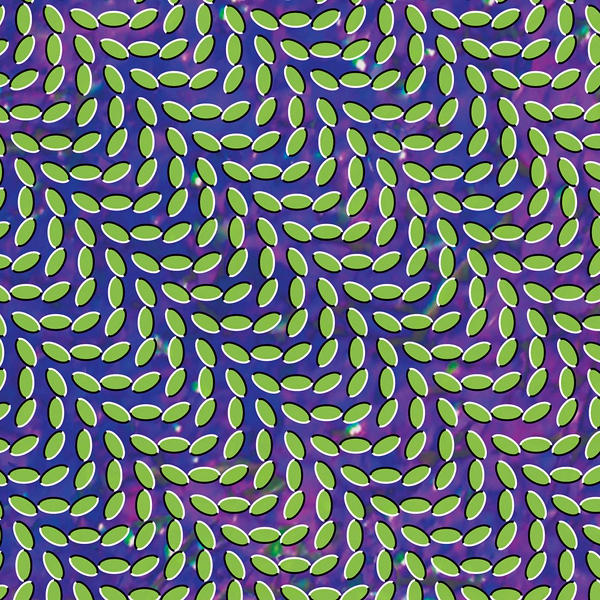
319
Animal Collective’s Merriweather Post Pavilion will always – for me at least – be intrinsically linked to the winter of 2008-09. Released on the same day that Barack Obama was inaugurated as the 44th president of the United States, the album was a sonic representation of a moment in time that, in many ways, felt like a page was actually turning.
Merriweather‘s first single, “My Girls,” was easily the most accessible track of Animal Collective’s career to date. The group had spent the previous decade incrementally sanding down the rougher edges of their experimental early work into something that, while more broadly appealing, still retained a unique artistic vision. The song’s modernistic sheen, big beat production, and chant-like vocals helped in making it a left-field hit.
From my perspective, there was a bit of validation in the fact that something that I had championed for several years was finally having its moment in the popular consciousness. Merriweather was the most critically acclaimed album of 2009, and it also brought Animal Collective their biggest commercial success. Unfortunately, from an artistic standpoint, they haven’t come close to matching it since.
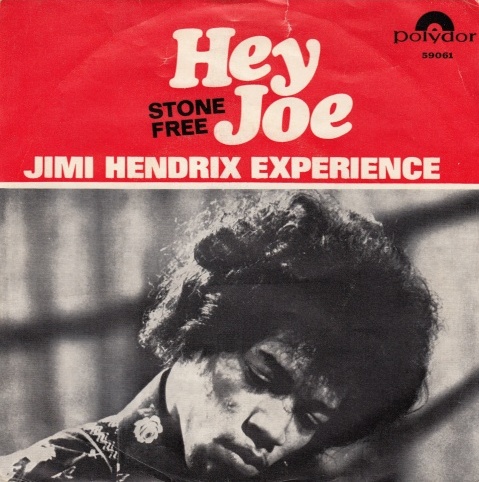
318
“Hey Joe” was not an original composition. In fact, the song had been making the rounds on the West Coast garage and folk scenes for at least a few years by the time Jimi Hendrix got a hold of it. However, there was still little precedent for it when it arrived at the tail end of 1966 as Hendrix’s first single.
Whereas The Leaves treated the song as a fast-paced rave-up, and The Byrds added some 12-string jangle, Hendrix slowed “Hey Joe” down to the tortured blues tempo that it was destined to be played at. From the outset, his guitar shoots lightning, but – as if not to be outdone – Hendrix is pushed to even more stirring heights by the urgent drum fills of Mitch Mitchell and the ominous scales of bassist Noel Redding.
Hendrix was, of course, an incomparable guitarist – unrivaled both in his own time, and to this day. However, “Hey Joe” also stands as a fine display of his commanding skills as a vocalist and arranger – elements that are often overlooked when assessing his legacy.
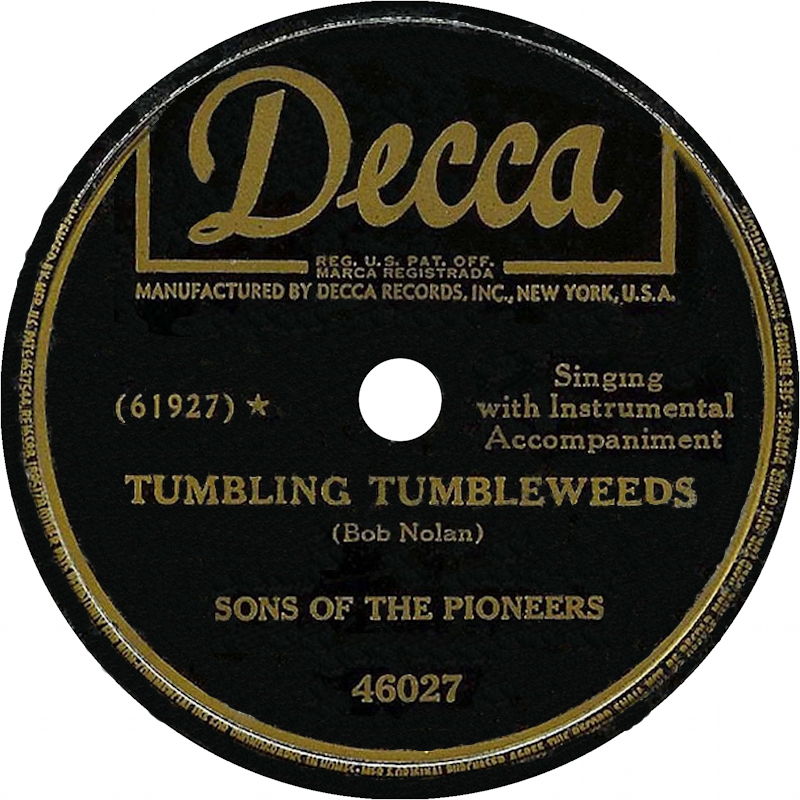
317
I mentioned in my entry on Vaughn Monroe’s “Riders in the Sky” (#938) that I have a soft spot for campy old cowboy songs. There are only a couple that are better than the signature song from The Sons of the Pioneers – one of the great western vocal groups.
Formed in Los Angeles in 1933 by Bob Nolan and Leonard Slye – later known as Roy Rogers – the Sons remain a country music institution, despite an ever-evolving lineup. They first recorded Nolan’s composition, “Tumbling Tumbleweeds,” in 1934, but would return to the song several times over the ensuing decades.
The best recording of “Tumbling Tumbleweeds” appeared as the B-side to a 1947 single of Nolan’s other great song, “Cool Cool Water.” This take – yes, it’s the same one that plays over the opening credits of The Big Lebowski – features the group’s finest harmonies, particularly in the spectacular final verse. It’s also augmented with an arrangement that stands on just the right side of the line between lush and overdone. It’s a fantastic performance and production of a stellar composition.
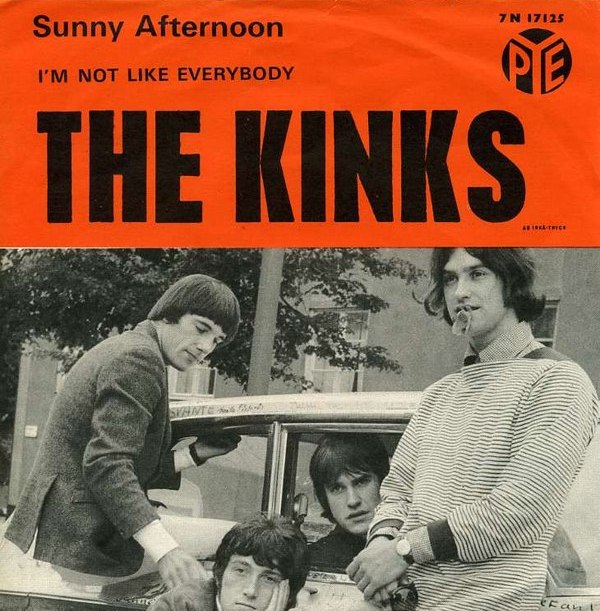
316
Following the initial 1-2 rush of “You Really Got Me” and “All Day and All of the Night,” The Kinks quickly became the most nuanced of the great British Invasion bands not named The Beatles. Mixing carefree rave-ups with mid-tempo social commentary – and everything both between and adjacent – the band crafted a remarkably rich catalog of singles, in addition to their stellar run of albums from the second half of the sixties.
One of the band’s greatest tracks, “Sunny Afternoon” was a moody masterpiece that found Ray Davies sounding considerably despondent, despite his professed “life of luxury.” A wry commentary on the class-based obsessions that also marked songs like “Dead End Street” (#754) and “Shangri-La” (#523), “Sunny Afternoon” was a step toward the band’s most rewarding era, and a highlight of their excellent 1966 album, Face to Face.
That step was reflected in the song’s debt to English music hall numbers, and the satirical bent that would become Davies’ stock in trade. The band would soon craft ornate homages to a fanciful British past, both real and imagined, but rarely again would they create such a rich image from a single three-minute pop song.
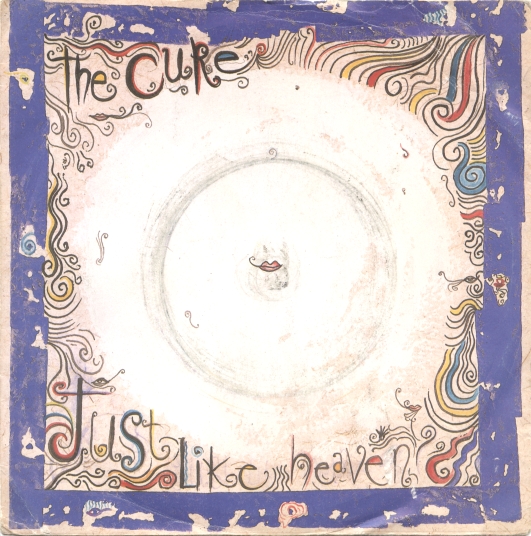
315
The Cure’s greatest song, “Just Like Heaven” was the centerpiece and obvious highlight of the band’s 1987 double-LP, Kiss Me Kiss Me Kiss Me. One of the most impeccable singles of the eighties, the track was the ultimate realization of the group’s pop acumen.
Everything about “Just Like Heaven” meshes in glorious harmony. Despite the fact that – like most great songs – it is far more than the sum of its parts, “Just Like Heaven” contains some truly remarkable individual elements. Most striking perhaps is the song’s instantly-recognizable descending guitar line – perfectly complemented by the airy bed of keyboards that give the track its dreamlike quality.
The Cure would attain iconic status due to their deft juxtaposition of light and darkness. However, their finest moment found Robert Smith and his band letting down their guard, and fully embracing a warmly melodic sound that perfectly suited their strengths.
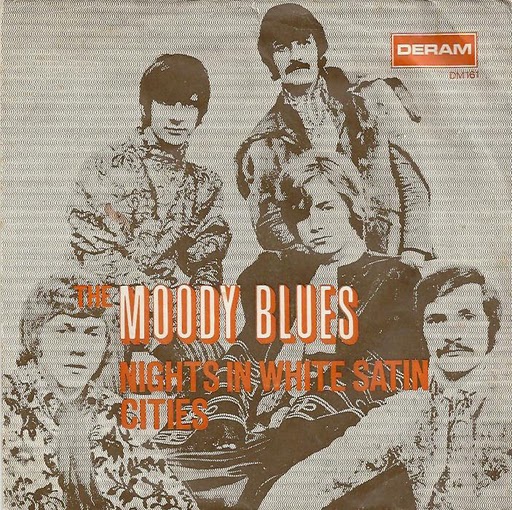
314
I’ve only become a serious collector of vinyl in the past few years, and in my hours of crate digging at Portland’s many excellent record shops, no great album turns up more often than The Moody Blues’ 1967 opus, Days of Future Passed. A huge seller at the time, but one that lacks the hip cache of contemporaneous psychedelic and baroque pop records, Days is unapologetic in both its pretension and its dorkiness. With that said, it’s a consistently endearing album, and one that is frequently stunning.
The album’s closing track, “Nights in White Satin” contains everything that is both great and awkward about Days of Future Passed. As a pop single, it’s masterful. Justin Hayward’s passionate vocals slink through the song’s morose, Mellotron drenched verses, and soar over the triumphant chorus. While the orchestration – provided by the London Festival Orchestra – is, at times, overdone in the earlier parts of the record, it’s a fitting complement to the shifting dynamics of “Nights in White Satin.”
Of course, on the album, the song’s climactic moment gives way to some of the record’s most overblown fanfare, and the hokey closing poetic recitation. Your tolerance for that may depend on the moment – or perhaps how often you heard Days in the backseat of your parents’ station wagon growing up – but everything that comes before it is golden.
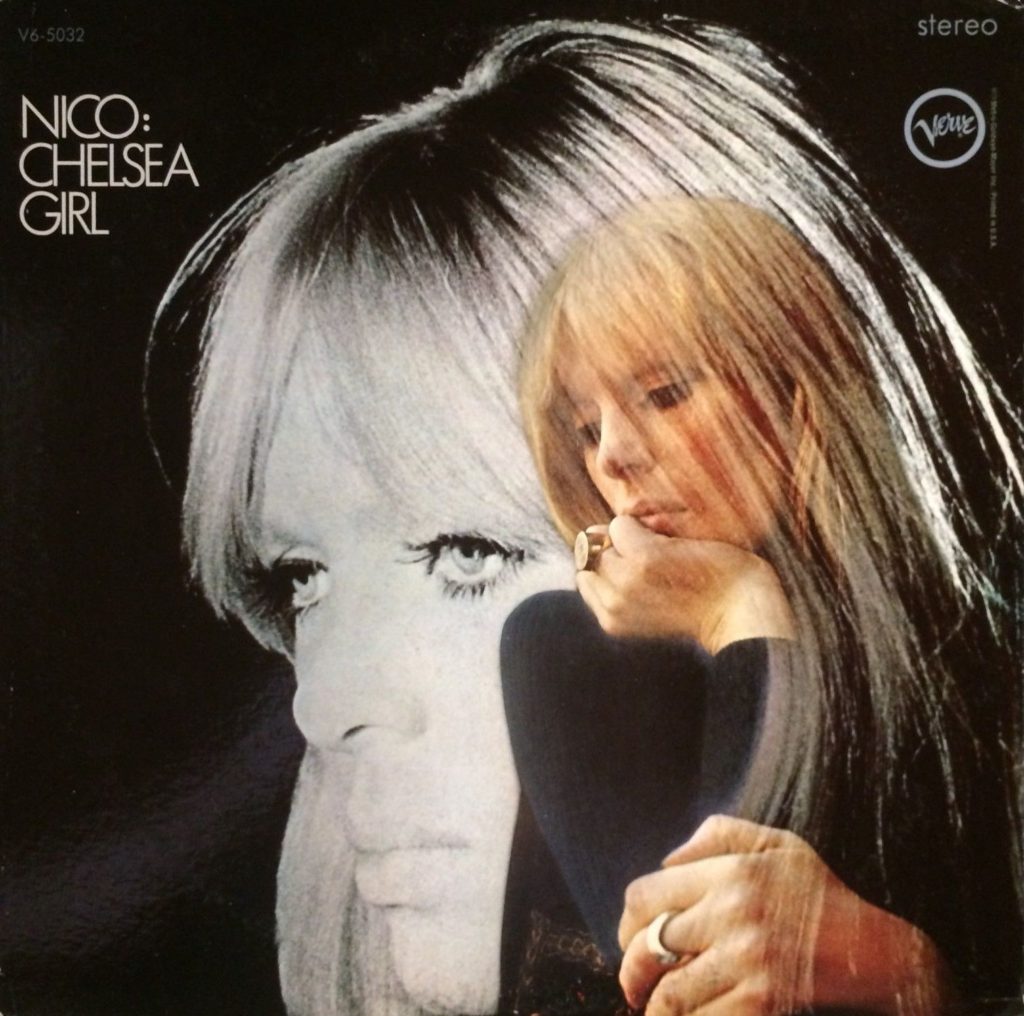
313
While Nico is best remembered for her three iconic vocal contributions to 1967’s The Velvet Underground & Nico, that year also saw the release of her debut album, Chelsea Girl. That record – the first in a trio of excellent releases that found the German vocalist beautifully skirting the line between the pop and avant garde worlds – contains her greatest moment.
Written by Jackson Browne – who also plays the song’s fingerpicked guitar part – “These Days” is even more intimate than Nico’s Velvet Underground tracks. The stark production places the emphasis squarely on her vocals – often described as cold and distant, but still managing to fully convey the song’s bittersweet nature. The track’s warmth comes largely from Larry Fallon’s tastefully minimalist – and perfectly complementary – string arrangement.
The complex emotionality of “These Days” makes it a particularly evocative track, and it’s that expressive quality that overcomes any outward sense of detachment. Whether in its original incarnation, scoring particularly-memorable film scenes, or covered by other great artists, “These Days” is simply an exquisite song.
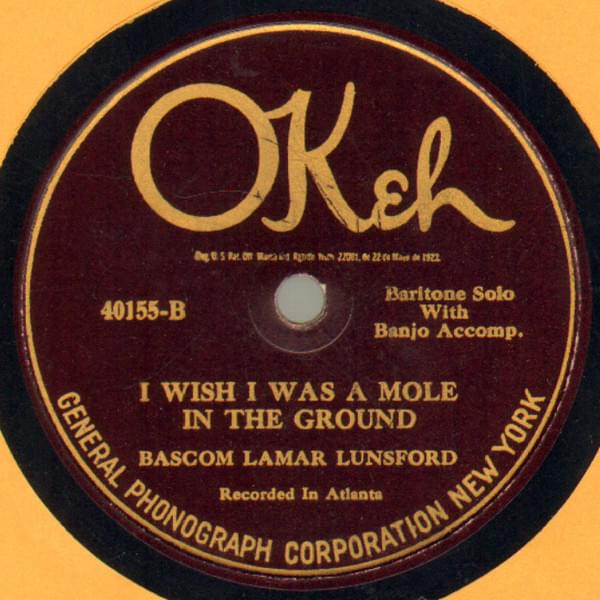
312
They didn’t write ’em like this back then, or something like that. Bascom Lamar Lunsford’s signature song may sound like a typical Appalachian folk recording from the 1920s at first glance, but deeper inspection reveals it to be a surprisingly surrealistic piece of writing, one with no simple – or perhaps single – interpretation.
Lunsford was something of a song collector, picking up tunes from various locales, and adding them into his own repertoire. “Mole” is cited as a traditional, but Lunsford claimed to have learned it from a teenaged neighbor, Fred Moody, in 1901. Lunsford’s 1928 single for Okeh creaks and crackles with a hard-won authenticity that makes it stand as the song’s definitive recording.
And what of that song? No less of authorities on “Old Weird America” than Harry Smith and Greil Marcus have offered up their own interpretations, but the space between the lines of the song leave plenty to the imagination. The desire that Lunsford expresses in its title is clear, but its purpose is unknown. Marcus called it “almost impossible to comprehend,” and yet, when one hears the despondent resignation of the song, you can’t help but relate to its sentiment entirely.
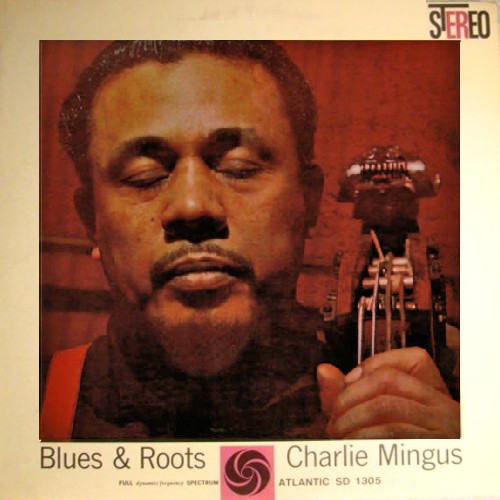
311
In the entry for “Wednesday Night Prayer Meeting” (#660), I mentioned how Charles Mingus recorded 1960’s Blues & Roots largely as a response to jazz critics who said that he “couldn’t swing.” With “Moanin’,” Mingus effectively proclaimed, “checkmate.”
Bringing his signature fiery approach to one of the most conventionally appealing tracks in his catalog, “Moanin’” may have been conceived as a rebuff, but Mingus and his band sound convincingly thrilled to tear through the track. Pepper Adams provides the song’s anchor with his classic baritone sax riff, and the group careens through the ensuing eight minutes with a level of abandon that was practically unheard of before.
Mingus had created his reputation on a series of game-changing experimental records in the mid-fifties, and within a few years, he would follow his muse to the masterful The Black Saint and the Sinner Lady. However, for a brief time in the late-fifties and early-sixties, he would prove to be just as compelling in a more traditional mode.
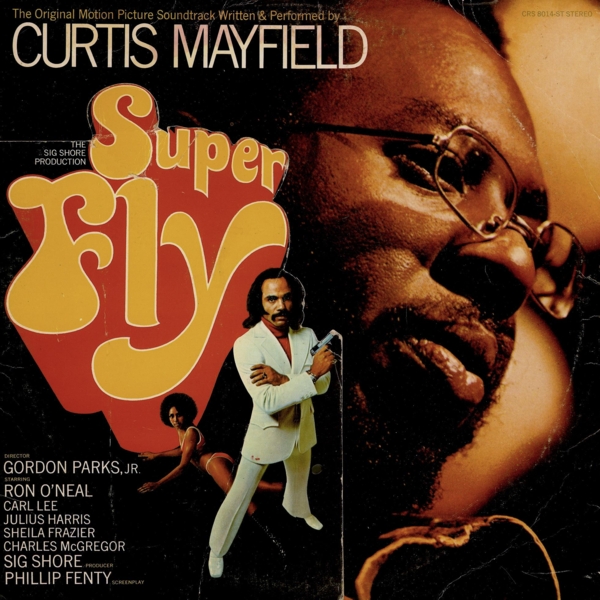
310
The soundtrack to 1972’s Superfly is generally regarded as Curtis Mayfield’s finest album. Though I have a slight preference for his remarkable 1970 debut, I will concede that Superfly manages to create a more immersive atmosphere – even more so than the film that it supported. That atmosphere is masterfully set on the album’s opening track.
“Little Child Runnin’ Wild” is a powerful example of the socially-conscious funk music that helped to define the cultural landscape of the early-seventies. Like Marvin Gaye’s What’s Going On and Sly & The Family Stone’s There’s a Riot Going On, Superfly was a legitimate hit record that opened many eyes to the perils of “urban decay.”
In “Little Child,” Mayfield lends his brilliant falsetto to the voiceless. He speaks of broken homes, addiction, and victims of circumstances far beyond their control. The surging music behind him swells, recedes, and escalates more and more cinematically with each crescendo. It pulses with an immediacy and realism that reflected the urgency of the moment.
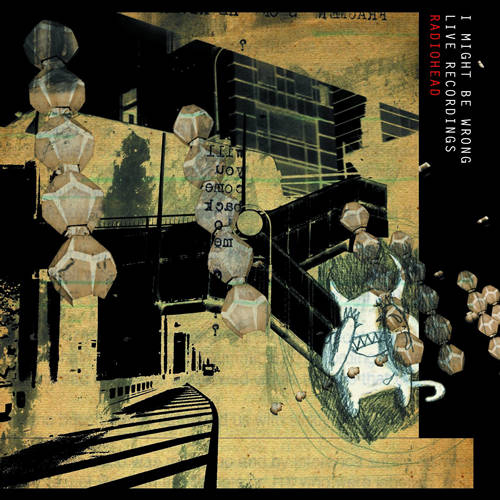
309
Radiohead released their ninth album, A Moon Shaped Pool, on May 8th, 2016. In an era where the the communal experience of a release date had been diminished in some ways and enhanced in others, I awaited the afternoon drop of the album by passing time on the Radiohead subreddit. Shortly before its scheduled arrival, the message board began losing its collective shit. Tucked away at the end the album’s alphabetically arranged track list was the band’s most beloved “lost” song.
The skeletal arrangement of “True Love Waits” served as a fitting endpoint to Radiohead’s most emotionally draining record – and, as many fans speculated at the time, what might have been the band’s final album. The fresh take on the old favorite had a haunting fragility that helped it rival “Present Tense” (#376) as the finest moment on A Moon Shaped Pool.
However, as the newness of an actual studio recording of one of Thom Yorke’s best combinations of lyrics and melody wore off, I found myself no less blown away by the original version – the one that had appeared at the end of Radiohead’s 2001 live EP, I Might Be Wrong. Both are stellar: intimate, spectral, and vulnerable in completely different ways. For the purposes of this list, I’m giving the slightest of edges to the live version.
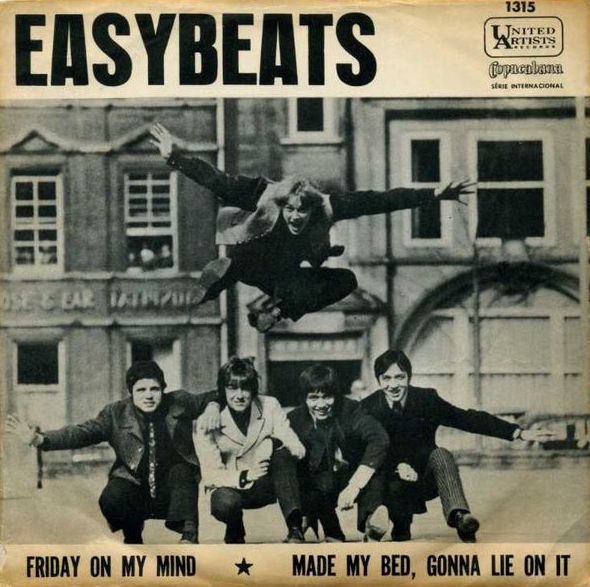
308
While they were hardly one-hit wonders – at least in their native Australia – one song towers over the rest of The Easybeats’ catalog. Released in the fall of 1966, “Friday on My Mind” was one of the most effervescent rock singles of the mid-sixties, and a timeless classic that still sounds refreshing today.
Produced by Shel Talmy – who was also at the helm for the breakthrough singles by The Who and The Kinks – “Friday on My Mind” thrives on the mild tension of its verses, and the giddy release of its explosive choruses. There’s little about the song that is overtly rebellious, but it has a frantic energy that has endeared it to countless rock bands in the decades since its release.
Setting a universal sentiment to an infectious pack of hooks, the track was a top twenty hit on three different continents, including an extended stay at #1 in the group’s home country. Frequently covered, and regularly chronicled on garage rock compilations old and new, “Friday on My Mind” remains a thrilling listen.
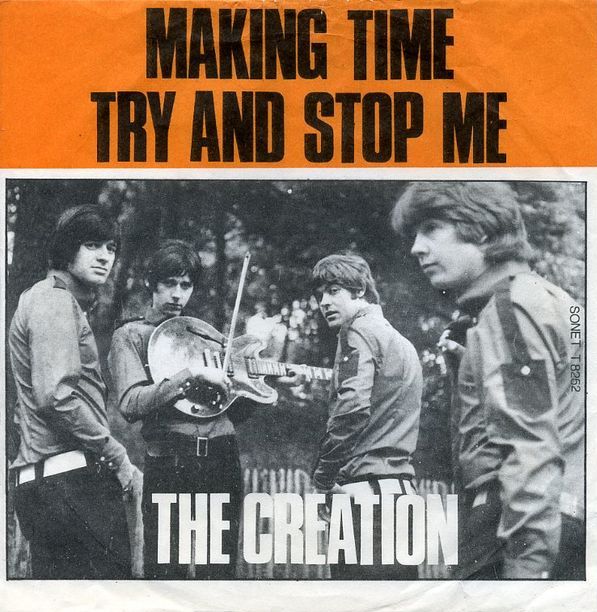
307
Known to many as the Rushmore song, “Making Time” was the debut single from The Creation – a band that drew inspiration from the wild template established by their British contemporaries in The Who and The Kinks, but that also brought a few new tricks of their own.
Eddie Phillips’ guitar riff introduces “Making Time” with an instantly appealing hook, one even more jagged than those of earlier efforts by Dave Davies and Pete Townshend. That looseness carries over into the song proper, devolving into a mess of feedback in the instrumental break that finds Phillips using a violin bow to coax an even more piercing sound from his guitar.
Like “Friday on My Mind,” “Making Time” skirts the line of rebellion by railing against the drudgery of the workaday world. The potent combination of restless energy, sharp hooks, loud volume, and vaguely class-based politics would prove to be extraordinarily influential to British rock bands in the ensuing decades.
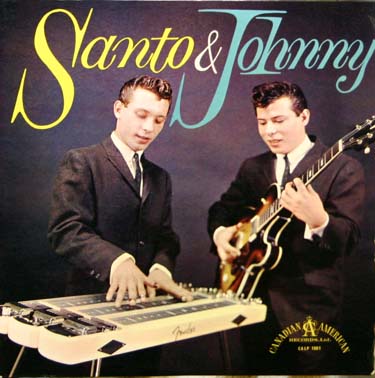
306
Naming an instrumental track is a somewhat tricky proposition, one that has a tendency to bring out the most pretentious qualities in a musician. Rarely does an evocatively-named instrumental manage to live up to its title, but “Sleep Walk” is an exception – a dreamy, languid, remarkable exception.
Brothers Santo and Johnny Farina wrote “Sleep Walk” in the wee hours of a sleepless, post-gig night. The song perfectly captures a state halfway between consciousness and unconsciousness, with its ethereal slide guitar leads and fifties prom chord progression. Backed by the steady, understated drums of their uncle, the Farina brothers would ultimately score a number one hit with the original 1959 single.
That initial recording is a classic, but I’ve always had a slight preference for the version that appeared on the duo’s 1959 self-titled album. Adding a quietly gasping Hammond organ and a low-key vibraphone, that take manages to retain the intimacy of the original, while creating an even more evocative soundscape. It is my pick for the greatest rock/pop instrumental track of all-time.
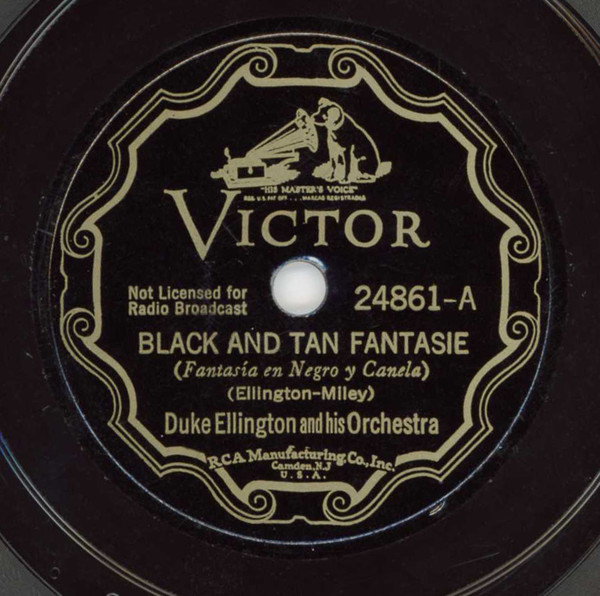
305
Duke Ellington’s greatest work still laid ahead of him when he recorded three different versions of “Black and Tan Fantasie” in the late twenties. However, the multi-part track would provide an intriguing glimpse into both Ellington’s genius and his future.
“Fantasie” previews the ambitious suites that would cement Ellington’s reputation in the years to come, as it works through several different movements during its three-minute run time. It swings and sways, before ending ominously with a brief snippet of Chopin’s “funeral march.”
While Ellington twice recorded “Black and Tan Fantasie” in 1927 – for both the Brunswick and Okeh labels – it’s the 1928 version on Victor that stands as the finest take. Backing the similarly sublime “Creole Love Call,” that recording finds Ellington and his orchestra near the peak of their considerable powers.
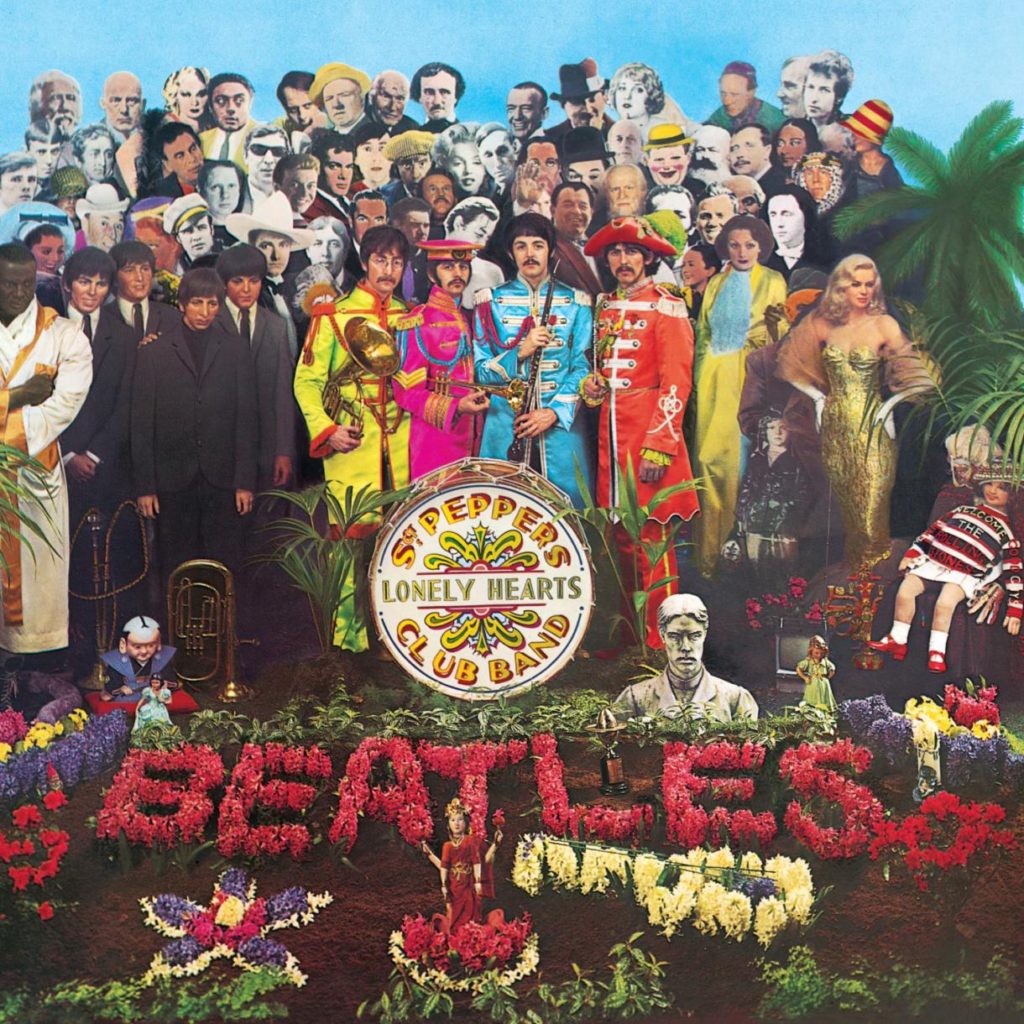
304
Admittedly, there was a part of me that was little happy to see Sgt. Pepper fall from #1 to #24 on Rolling Stone‘s recent revision of their “Greatest 500 Albums of All-Time” list. While at no point in its fifty-three-year existence has the album ever been viewed as a scrappy underdog, perhaps seeing it fall from the top of the pedestal of the self-proclaimed authority on rock journalism will lead to less Pepper-related nitpicking.
One of the supposed knocks against Pepper is, that for all its technical achievements, it’s relatively slight on songs. I’ve never quite bought that argument – even if one could argue that, song-for-song, Revolver or Rubber Soul are more impressive. Sgt. Pepper‘s greatness comes from its kaleidoscopic nature. While that’s certainly an attribute of Revolver as well, on Sgt. Pepper, the effect is wholly immersive.
Take for instance the psychedelic detail found in “Lucy in the Sky With Diamonds.” The track’s dreamlike state is created in its heavily effected organ, the drone of a tambura, and John Lennon’s surrealist, Lewis Carroll-inspired imagery. Ever the supportive collaborators, producer George Martin and engineer Geoff Emerick help bring Lennon’s multi-colored vision to life, with an arrangement that is full without being fussy, and experimental without losing the song’s inherent tunefulness.
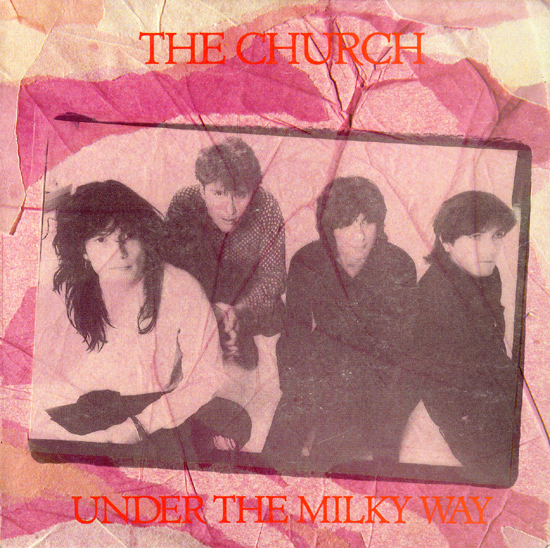
303
The greatest song to ever emerge from Australia? According to this list it is. While The Church had a lengthy run of success both at home and abroad, for most non-Aussie listeners, the Sydney group’s legacy is forever tied to “Under the Milky Way.”
Melodic, melancholy, and minor key, “Under the Milky Way” establishes an intriguing atmosphere from the outset, and only grows more compelling with each subsequent recitation of the title refrain. The chorus finds the song opening up considerably, from both a musical and lyrical standpoint, and the instrumental break adds a melange of alluring sounds, both organic and electronic.
Surprisingly, “Under the Milky Way” was not a massive hit for The Church – even in their native land. The song would prove durable though, remaining a long-time radio staple in Australia, Britain, and the United States, and lending its captivating mood to a number of appearances in film and television soundtracks.
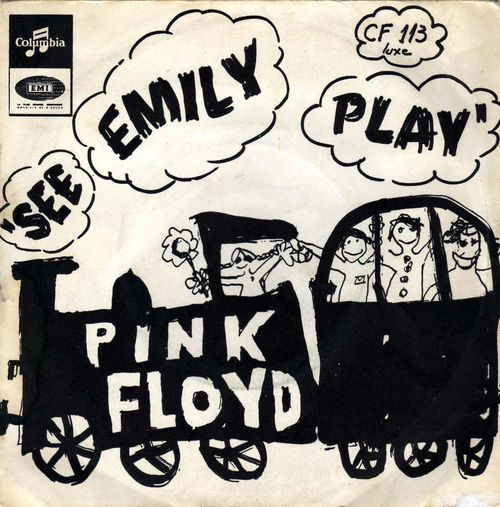
302
This isn’t exactly a hot take – since it’s an opinion that I’ve held for many years – but I can see how it might come off as one. I genuinely believe that Pink Floyd peaked during their Syd Barrett-led early years, and that the eventual arena rock juggernauts were never better than they were on their second single.
Released in the early summer of 1967 – just weeks after Sgt. Pepper – “See Emily Play” represented a new highpoint for psychedelic whimsy. Like “Lucy in the Sky With Diamonds,” “Emily” mixed surrealist imagery with psychedelia’s other primary obsession: childhood wonderment. This is evoked not only in Barrett’s lyrics, but in the song’s trippy production flourishes and the skittering instrumental break that links its first chorus with its second verse.
In time, Pink Floyd – minus Barrett – would come to redefine psychedelia for a different generation. In particular, their work from the mid-seventies remains among the most iconic rock music ever recorded, serving as a gateway for listeners to dive further into the genre. However, for me, “See Emily Play” stands as their peak.
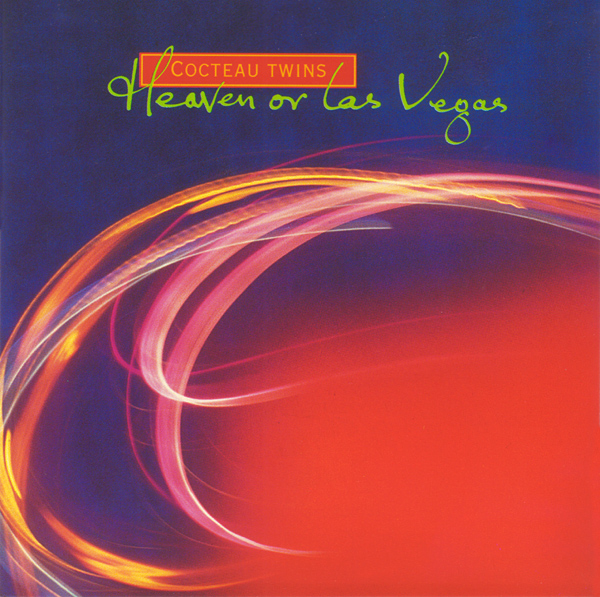
301
Scotland’s Cocteau Twins are the archetypal dream pop group, and 1990’s Heaven or Las Vegas stands as the band’s crowning achievement. Finding a perfect equilibrium between their experimental impulses and knack for slightly off-kilter hooks, the record puts its best foot forward on the evocative opening track, “Cherry-Coloured Funk.”
As is often the case with Cocteau Twins, there is little revealed in Elizabeth Fraser’s lyrics. More important for how they sound than what they actually say, Fraser’s vocals are merely another element in an engrossingly lush arrangement of Robin Guthrie’s densely layered – and heavily treated – guitars.
In time, Cocteau Twins would get their recognition as a primary influence on subsequent bands: like Beach House, who matched their ethereal beauty; and Sigur Rós, who found inspiration in their “vocals over lyrics” approach. “Cherry-Coloured Funk” is a most-welcoming introduction to their stellar body of work.


